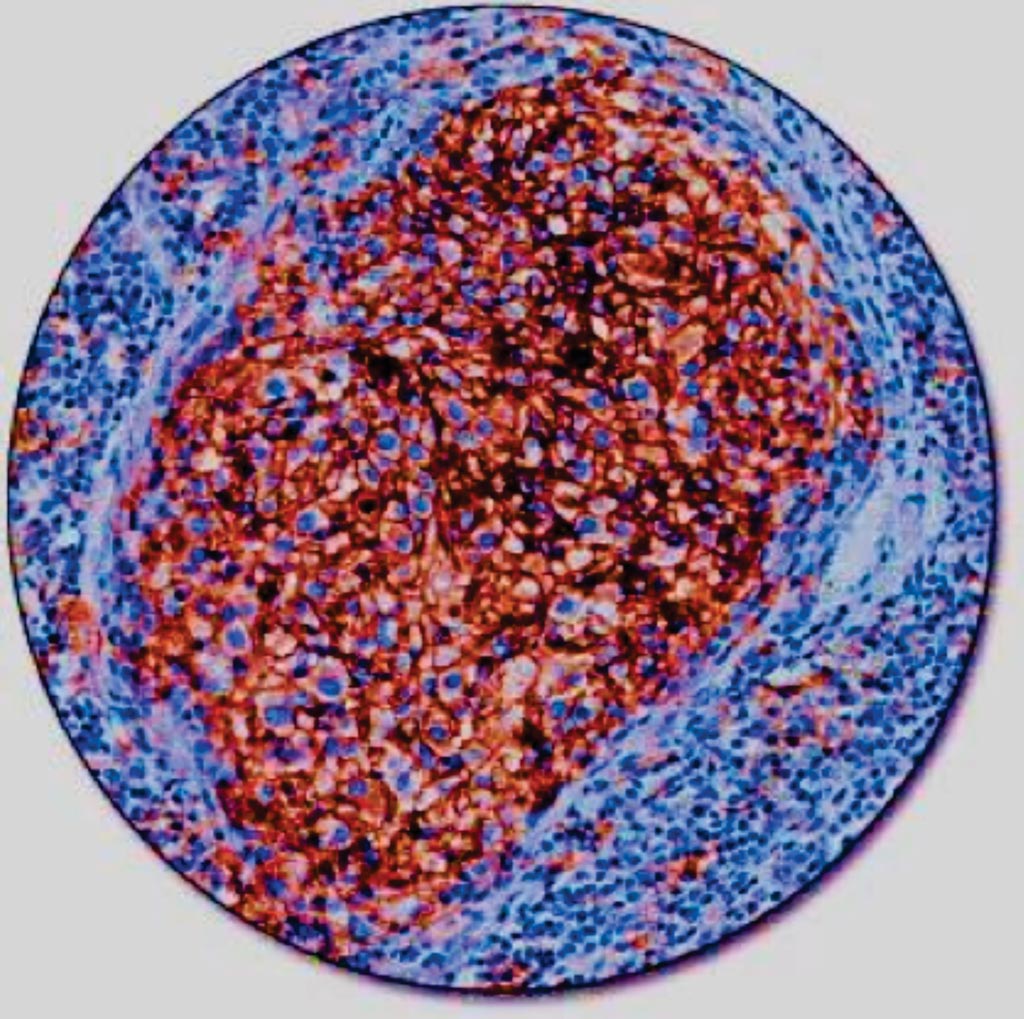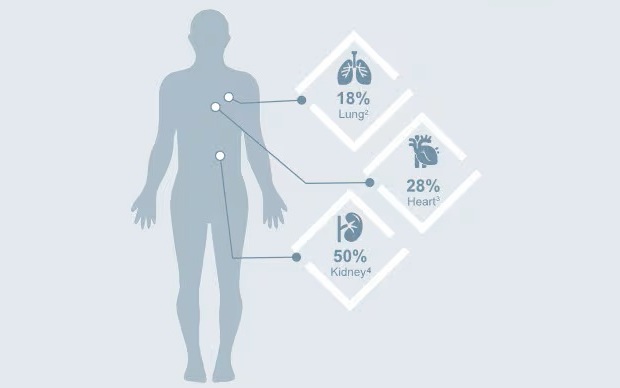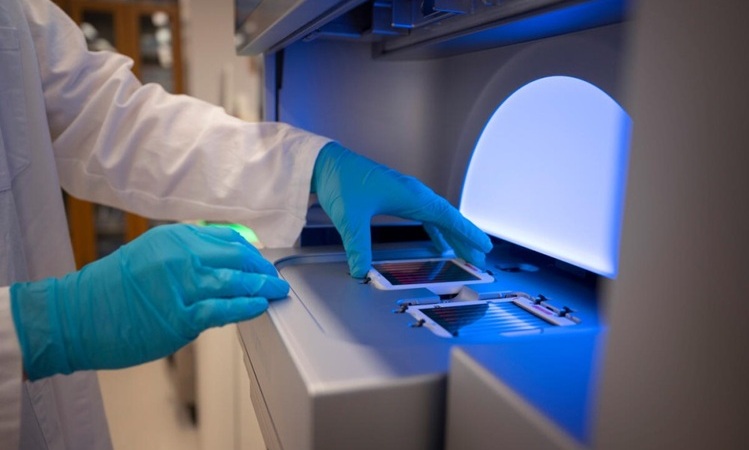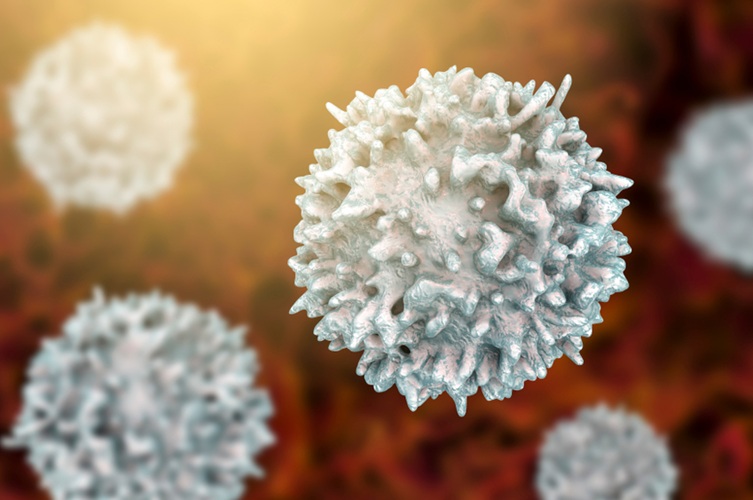Assay Identifies Patients Benefiting from Cancer Immunotherapies
By LabMedica International staff writers
Posted on 14 Nov 2017
Programmed cell death ligand 1 (PD-L1) has been detected in up to 50% of all human cancers, and has become a major focus of therapeutic and biomarker studies.Posted on 14 Nov 2017
Patients with cancers expressing the PD-L1 protein are more likely to respond to certain immuno-oncology therapeutics, and several PD-L1-related immuno-oncology therapies have received official approval. A test that delivered PD-L1 results from plasma read out as continuous variables may be of increased utility in the selection of therapeutic options.

Image: An immunohistochemistry of PharmDX 22c3 staining of non-small-cell lung carcinoma (Photo courtesy of Agilent).
A team of scientists collaborating with those at Pinehurst Medical Clinic-East (Pinehurst, NC, USA) focused this test development on mechanisms of blood-based testing for sensitive measurement of circulating RNA using droplet digital polymerase chain reaction (ddPCR). Specifically, they optimized methods for the detection of PD-L1 transcripts recovered from platelet-enriched plasma. Specimens for feasibility and development included tumor derived cell lines, activated and resting immune cells, 38 normal donor plasma and 79 non-small-cell lung carcinoma (NSCLC) donor plasma. They collected a total of 43 tissue and blood samples to assess the potential for concordance with tissue testing,
The team used an assay developed by Biodesix, Inc (Boulder, CO, USA) with the ddPCR and found that of the 79 NSCLC donor specimens initially evaluated with the RNA blood test, they observed a frequency of 62% positive samples with highly variable levels of plasma PD-L1 (2 - 774 copies). They then evaluated a subset of a sample cohort with the PharmDX 22c3 immunohistochemistry (IHC) tissue test result. Although there was poor concordance with a 50% positive IHC cut-off, when they used a variable threshold based on a logistic regression score for the blood assay and the 1% cut-off, concordance of up to 80% was observed between the two assays.
The authors concluded that they have developed sensitive and specific methods that measure the dynamic range of PD-L1 in circulation. This assay is capable of measuring PD-L1 in circulation that arises from activated immune cells and/or tumor cells. They have identified a preliminary threshold for the PD-L1 circulating blood test in development that shows concordance with tissue IHC when using the 22c3 clone at 1% cut-off.
Michael Pritchett, DO, MPH, the lead author of the study, said, “Measurement of PD-L1 is challenging not only when tissue is lacking, but due to the inherent complexity of immunohistochemistry. The testing approach demonstrated in this study shows promise as a method of assessing PD-L1 in plasma. A more objective measure of PD-L1 status could offer a path to better patient care decisions in the treatment of non-small cell lung cancer.” The study was presented on October 28, 2017, at the AACR-NCI-EORTC conference held in Philadelphia, PA, USA.
Related Links:
Pinehurst Medical Clinic-East
Biodesix













